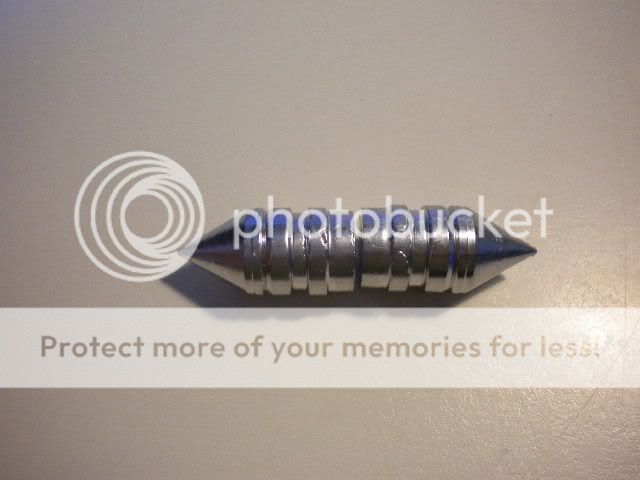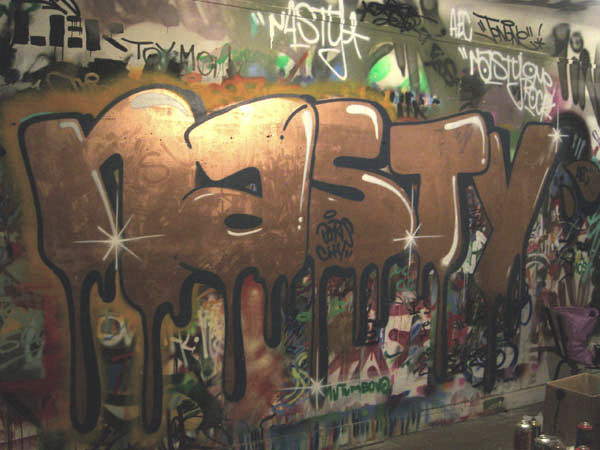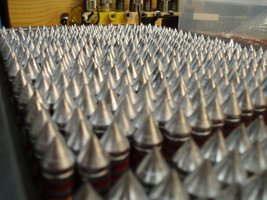Patriot
NES Member
My 'NEW" smelting pot
I finally got motivated to build one of those propane tank smelting pots. Pictures and a description
of my experience are in order so here goes:
1) Obtained 'empty' 20 Lb propane tank. To make sure it was empty I opened the bleeder on the side
of the valve. It was close to empty, but there was still a minute amount of propane left. Enough to make
a bang.
2) I left the tank overnight with the bleeder valve open and the next day I removed the valve assembly with
a wrench and a hammer. They are on tight, probably with a thread tightening compound. When you get
the valve assembly off, save it for the junkie as it is mostly brass.
3) I turned the tank upside down as propane is heavier than air. With no valve I was pretty sure I would
be OK if I left it a few days. I actually left it for two weeks this way. Not for concern over any propane,
just that was when I got around to working on it again. BTW, you will never get rid of the odor until
you actually fire up the pot to smelt lead.
4) I was concerned about the stability of the tank on my burner so I decided to use the tank remnants
to solve my stability concerns. I measured my cut locations 1" above the weld seam and then 3" above
that cut location. Those measurements will keep the cuts on the flat side of the tank. I made these cuts
with a sawzall and the first cut I made wasn't anything to write home about. Not bad, but not great
either. The second cut (because I wanted one good even cut to use for the base on the burner) I made
a preliminary cut, not all the way through, but just enough to help guide the blade for the final cut
and that seemed to work better. Either that or I was getting better at it.
Here are the pieces after the cut:



5) Being concerned with a solid piece of metal smothering the burner I added holes to the stabilizer ring
every 2.5" and they are located in the middle of the ring, 1.5" from either edge. I'm not sure how big
the holes have to be but these are almost 3/8" and if I need to make them bigger later on it wouldn't
be difficult. There are 15 holes in the ring so that gives me 1.66 sq inches of venting as well as the
open part of the seams along the weld. If I increase the hole size to 1/2 inch I could improve the
hole venting to almost three sq inches if needed.
6) You ask why I made the stabilizer ring three inches? Well that is what I estimated it would take to have
the tank sit on the ring and still have the existing ring engage the burner as well. I don't think I was far
off.
7) Now all I had to do is get the stabilizer ring welded to the tank so I turned to one of the best NES'ers
around (Fixxah). Thanks buddy!
Here is the result of the welding. He apologized for the fact that he didn't grind down the welds but
he did this yesterday (7/13) after work! What a great guy. John, I think they look beautiful. This was
taken after I had put it to the fire so a lot of the dark ring around the welds is from the paint burning off
on the bottom of the tank.

Even though it was raining a bit I couldn't just turn this beauty on and not melt a little lead so I tossed a
bit of range scrap in it.

I wanted to see how it held some of my smelting tools so here is a picture of the pot with my Rowell
bottom pour ladle and a skimming spoon. At last, a little pool of lead!

I also took a picture of my four quart cast iron dutch oven sitting inside of it to give you an idea of how
much my capacity increased.

Finally, the results exceeded my expectations.
1) The pot is rock solid on the burner, better than the cast iron pot.
2) The heat seems to be concentrated on the entire area under the stabilizer ring. If you notice on the
internals of the pot you will see the discoloration of the pot where the heat is concentrated.
3) The pot heats up fast and cools down fast.
4) My only problem is that I will need some sort of tool holder on the pot as I have to keep the bowl of
my Rowell ladle hot when smelting. Interestingly enough, in the picture where you see the ladle in the
pot, the handle was still cool after around ten minutes. The heat is very concentrated on the bottom of
the pot. I expect with a longer casting session it would warm up pretty good though.
5) Finally I do need to put a handle on the pot. That is the reason I made the cut on the pot above the
seam. I figured that if I do get a wire handle on the pot the seam will add strength to the locations where
I drill the holes.
Anyways, I hope this helps. The only part you have to be very, very sure of is that the tank is empty.
Once you do that, you are home free.
I finally got motivated to build one of those propane tank smelting pots. Pictures and a description
of my experience are in order so here goes:
1) Obtained 'empty' 20 Lb propane tank. To make sure it was empty I opened the bleeder on the side
of the valve. It was close to empty, but there was still a minute amount of propane left. Enough to make
a bang.
2) I left the tank overnight with the bleeder valve open and the next day I removed the valve assembly with
a wrench and a hammer. They are on tight, probably with a thread tightening compound. When you get
the valve assembly off, save it for the junkie as it is mostly brass.
3) I turned the tank upside down as propane is heavier than air. With no valve I was pretty sure I would
be OK if I left it a few days. I actually left it for two weeks this way. Not for concern over any propane,
just that was when I got around to working on it again. BTW, you will never get rid of the odor until
you actually fire up the pot to smelt lead.
4) I was concerned about the stability of the tank on my burner so I decided to use the tank remnants
to solve my stability concerns. I measured my cut locations 1" above the weld seam and then 3" above
that cut location. Those measurements will keep the cuts on the flat side of the tank. I made these cuts
with a sawzall and the first cut I made wasn't anything to write home about. Not bad, but not great
either. The second cut (because I wanted one good even cut to use for the base on the burner) I made
a preliminary cut, not all the way through, but just enough to help guide the blade for the final cut
and that seemed to work better. Either that or I was getting better at it.
Here are the pieces after the cut:



5) Being concerned with a solid piece of metal smothering the burner I added holes to the stabilizer ring
every 2.5" and they are located in the middle of the ring, 1.5" from either edge. I'm not sure how big
the holes have to be but these are almost 3/8" and if I need to make them bigger later on it wouldn't
be difficult. There are 15 holes in the ring so that gives me 1.66 sq inches of venting as well as the
open part of the seams along the weld. If I increase the hole size to 1/2 inch I could improve the
hole venting to almost three sq inches if needed.
6) You ask why I made the stabilizer ring three inches? Well that is what I estimated it would take to have
the tank sit on the ring and still have the existing ring engage the burner as well. I don't think I was far
off.
7) Now all I had to do is get the stabilizer ring welded to the tank so I turned to one of the best NES'ers
around (Fixxah). Thanks buddy!
Here is the result of the welding. He apologized for the fact that he didn't grind down the welds but
he did this yesterday (7/13) after work! What a great guy. John, I think they look beautiful. This was
taken after I had put it to the fire so a lot of the dark ring around the welds is from the paint burning off
on the bottom of the tank.

Even though it was raining a bit I couldn't just turn this beauty on and not melt a little lead so I tossed a
bit of range scrap in it.

I wanted to see how it held some of my smelting tools so here is a picture of the pot with my Rowell
bottom pour ladle and a skimming spoon. At last, a little pool of lead!

I also took a picture of my four quart cast iron dutch oven sitting inside of it to give you an idea of how
much my capacity increased.

Finally, the results exceeded my expectations.
1) The pot is rock solid on the burner, better than the cast iron pot.
2) The heat seems to be concentrated on the entire area under the stabilizer ring. If you notice on the
internals of the pot you will see the discoloration of the pot where the heat is concentrated.
3) The pot heats up fast and cools down fast.
4) My only problem is that I will need some sort of tool holder on the pot as I have to keep the bowl of
my Rowell ladle hot when smelting. Interestingly enough, in the picture where you see the ladle in the
pot, the handle was still cool after around ten minutes. The heat is very concentrated on the bottom of
the pot. I expect with a longer casting session it would warm up pretty good though.
5) Finally I do need to put a handle on the pot. That is the reason I made the cut on the pot above the
seam. I figured that if I do get a wire handle on the pot the seam will add strength to the locations where
I drill the holes.
Anyways, I hope this helps. The only part you have to be very, very sure of is that the tank is empty.
Once you do that, you are home free.
Last edited:

![Thumbs Up [thumbsup] [thumbsup]](/xen/styles/default/xenforo/smilies.vb/044.gif)
![Smile [smile] [smile]](/xen/styles/default/xenforo/smilies.vb/001.gif)


![Wink [wink] [wink]](/xen/styles/default/xenforo/smilies.vb/002.gif)

